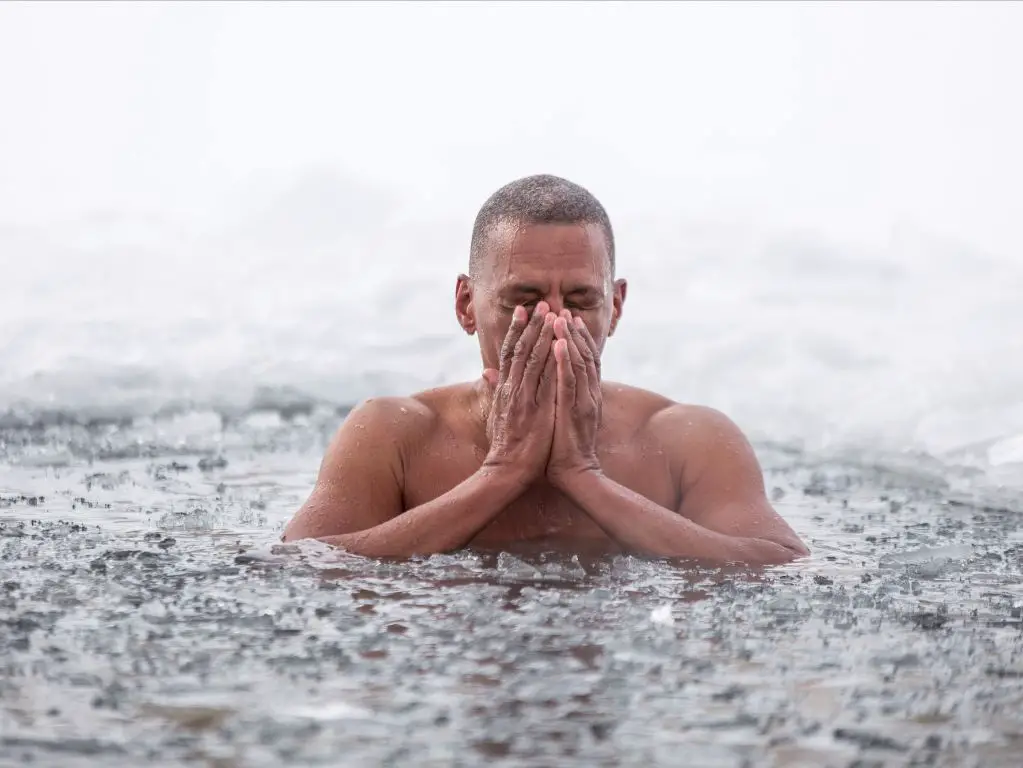Is Polar Plunge Worth It?
What is the Polar Plunge?
The Polar Plunge is a fundraising event where participants brave frigid winter waters by jumping into a lake or ocean to raise money for a charity, most commonly Special Olympics. Participants collect pledges and donations leading up to the event, then plunge into the cold water on the big day. Plunges are organized at various locations around the U.S. between January and March when the water temperatures are near freezing.
According to Special Olympics[1], the first Polar Plunge event took place in Maryland in 1991 when one man decided to jump into the frigid Chesapeake Bay to raise $7,000 for Special Olympics. His stunt inspired other Maryland police officers to join, eventually leading to the creation of the Maryland State Police Polar Bear Plunge involving thousands of plungers raising over $2 million annually.
Polar Plunges quickly spread nationwide throughout the 1990s. They continue today as popular annual events that allow participants to support a worthy cause while braving icy waters for an exhilarating and unforgettable experience.
Who participates in the Polar Plunge?
Polar Plunge events attract participants of all ages and backgrounds who wish to support charitable causes. According to Wikipedia, the annual Vancouver Polar Bear Swim Club has attracted between 1,000 to 2,000 registered participants each year since 1920, with a record of 2,128 people taking the plunge in one year.
Demographics vary by event location and the charities involved. For example, the Maryland State Police Polar Bear Plunge which benefits Special Olympics Maryland draws over 10,000 plungers annually. Nearly half of participants range from ages 21-40, and groups often form teams with friends, co-workers, families or for networking. Many companies use it as a team building exercise.
While anyone can participate, plungers tend to be adventurous, philanthropic and willing to brave the cold for a good cause. Events attract more males than females, with an estimated 70% male and 30% female split on average.
What are the costs to participate?
The main costs associated with participating in a Polar Plunge event are the registration fee and minimum fundraising amount. According to https://polarplungewi.org/faq/, there is typically a registration fee around $100 per participant. This covers the operational costs of hosting the event. Additionally, plungers must commit to raising a minimum amount for their chosen charity, usually around $75 or more according to https://somo.org/plunge/. This ensures each participant is contributing meaningfully to the charitable cause. So in total, plungers can expect to pay around $100 out of pocket for the registration fee plus raise at least $75 through fundraising efforts. The registration fee and minimum fundraising amount can vary based on the specific Polar Plunge event and organizers, but these costs provide a general idea of what to expect for those interested in taking part.
What charities benefit from the Polar Plunge?
The main beneficiary of Polar Plunge events is Special Olympics (https://www.specialolympics.org/stories/impact/polar-plunge-for-special-olympics). The Polar Plunge is one of the biggest fundraising events for Special Olympics chapters across the United States and around the world. Money raised through Polar Plunge events helps provide sports training, competition opportunities, and health resources for Special Olympics athletes in local communities.
Other charities that often benefit from Polar Plunge events include local chapters of the Special Olympics Young Athletes program, Best Buddies, local parks and recreation programs, and various other organizations supporting people with intellectual disabilities. The specific charities benefiting varies by Polar Plunge event location and organizers.
Overall, the Polar Plunge aims to raise funds for organizations that promote inclusion, friendship, empowerment and health for people with intellectual disabilities. The plunges provide critical funding and awareness for these important causes.
What are the health risks?

Participating in a polar plunge comes with some health risks, primarily related to the sudden exposure to extremely cold water. The most serious risk is hypothermia, which occurs when the body loses heat faster than it can produce it (1). Mild hypothermia causes shivering, confusion, and loss of coordination. More severe hypothermia leads to a dangerously low body temperature, irregular heartbeat, and unconsciousness. Plungers can develop hypothermia within minutes of entering cold water (2).
The sudden cold water shock also puts strain on the heart and cardiovascular system (3). The plunge triggers a spike in heart rate and blood pressure. For some participants, especially those with underlying heart conditions, this sudden shock could increase the risk of heart attack or cardiac arrest (1). There have been reported deaths due to heart attacks during or shortly after polar plunges.
Other health risks include hyperventilation, panic attacks, and pneumonia if water is inhaled. Proper preparation and safety precautions are essential to minimize these risks.
(1) https://www.heart.org/en/news/2022/12/09/youre-not-a-polar-bear-the-plunge-into-cold-water-comes-with-risks
(2) https://www.ctvnews.ca/health/are-polar-plunges-safe-here-s-what-experts-say-1.6213365
(3) https://www.npr.org/sections/health-shots/2023/12/31/1222344187/want-a-polar-bear-plunge-on-new-years-day-heres-a-deep-dive-on-cold-water-dips
What safety precautions are in place?
Organizers of polar plunges take many safety precautions to protect participants. According to the Ohio Health blog*, emergency personnel are onsite at most events, including EMTs, paramedics, and firefighters. They monitor participants before, during, and after the plunge and are prepared to respond quickly to any medical emergencies.
Warming stations are also set up so participants can get out of the cold immediately after plunging. These stations have warm beverages, towels, blankets, and spare clothes so people can warm up quickly. Volunteers staff the warming stations to assist anyone showing signs of hypothermia. The Red Cross recommends* keeping warming stations heated to at least 70°F.
In summary, having emergency personnel and warming stations onsite allows polar plunge participants to have fun while minimizing health risks.
*Cited source URL
What are the benefits to charities?
The Polar Plunge raises significant funds for Special Olympics programs each year. According to the Special Olympics website, over $20 million is raised annually through Polar Plunge events across the country (https://www.specialolympics.org/stories/impact/polar-plunge-for-special-olympics). The money raised goes directly to support Special Olympics athletes and competitions. For example, in Minnesota alone, the Polar Plunge has raised over $42 million for Special Olympics Minnesota since its inception in 1991 (https://www.plungemn.org/donate/). These funds allow thousands of Special Olympics athletes to participate in sports training and competitions each year that they otherwise may not be able to access.
What are personal benefits to participants?
Taking the polar plunge provides many personal benefits beyond raising money for charity. One of the biggest benefits is the camaraderie and sense of community that comes from participating in the event with others. There is a powerful feeling of togetherness when jumping into frigid waters as part of a group. Many participants report feeling an instant bond with their fellow plungers, who are all willing to endure the cold for a common cause. The experience can be a social one, with many plungers joining teams or plunging with friends and family. There is often a festive, party-like atmosphere at polar plunge events as well.
Beyond the social aspects, polar plunging provides an immense sense of accomplishment for those who take the chilly dip. It takes courage and mental fortitude to fully submerge in near-freezing waters. Successfully completing the plunge gives participants an adrenaline rush and feeling of pride for facing their fears and pushing past discomfort. The exhilaration of running into cold water and coming out on the other side creates lasting memories. Participants often feel profoundly satisfied after rising to the difficult challenge.
Plunging into icy waters also provides the opportunity to prove one’s grit and toughness. The ability to withstand the cold temperature when many others would shy away can be incredibly empowering. Polar plunging allows people to test their limits and find inner strength.
Notable Polar Plunge Events
Some of the largest and most notable polar plunge events include:
The Polar Plunge in Virginia Beach, Virginia is considered the largest plunge in the country with over 10,000 participants annually. It raises money for the Special Olympics Virginia.
In New Jersey, the Seaside Heights Polar Plunge brings thousands of people to the Jersey Shore each year. It’s the state’s largest plunge and benefits the Special Olympics New Jersey.
Maryland hosts the Polar Bear Plunge at Sandy Point State Park which attracts plungers from across the country and raises over $2 million annually for the Maryland Special Olympics.
Many celebrities have also taken the plunge at events for charity, including actors Vince Vaughn and Jack Black at the Chicago Polar Plunge benefiting Special Olympics Illinois.
Is the Polar Plunge worth it?
When weighing the risks and benefits of participating in a polar plunge, one of the biggest considerations is the health impact. While some claim there are health benefits like boosting the immune system, research shows minimal evidence for this (https://www.heart.org/en/news/2022/12/09/youre-not-a-polar-bear-the-plunge-into-cold-water-comes-with-risks). The sudden plunge into cold water puts strain on the heart and can be dangerous for those with underlying medical conditions. Proper safety precautions like having medical staff on standby are important.
However, for healthy individuals, the health risks are generally low if proper precautions are taken. Other benefits like the thrill of the experience and sense of community from fundraising for charity may make the plunge worthwhile to many. While the direct health benefits are questionable, participating can boost mood and provide a sense of accomplishment. Overall, with proper preparation and medical advice, the polar plunge can be a fun community experience that raises money for good causes.




